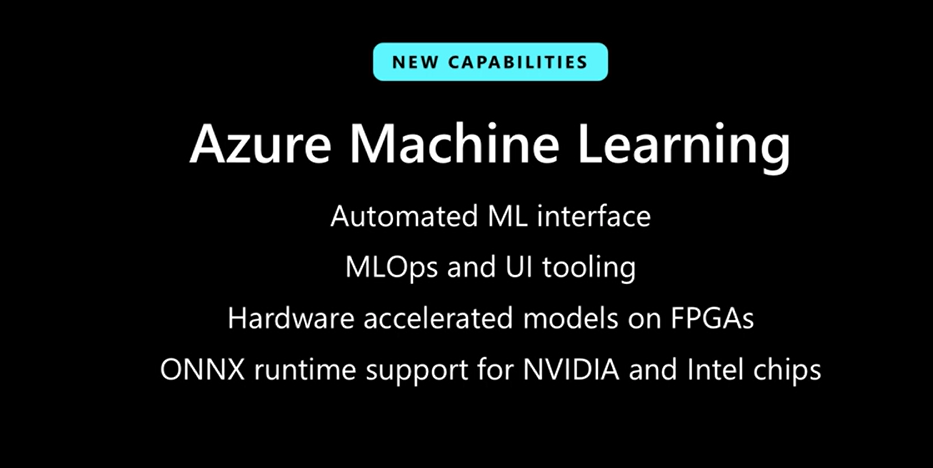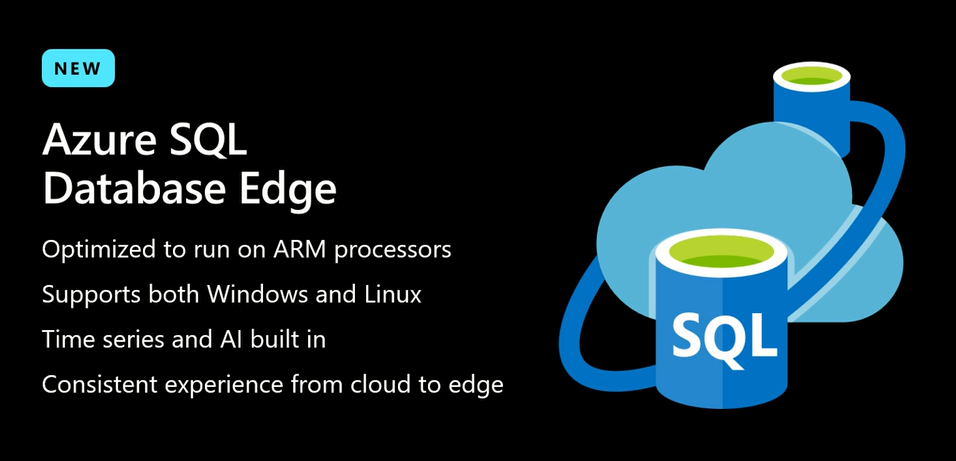There were a lot of exciting new technologies and services announced at the Microsoft Build 2019 – Redmond’s annual developer conference. Below are some of the key highlights, which focuses on the innovations and services regarding Azure IoT (Cloud and Edge) offering: –
Azure IoT Cloud
Azure Cognitive Services

Source: Microsoft & Counterpoint Analysis
- Microsoft currently offers about 20 cognitive services, which developers can use to perform image recognition, speech recognition, natural language processing, anomaly detection, and other tasks
- At this year’s Build, Microsoft announced the launch of a new cognitive service category called ‘Decision’, which will offer user-specific recommendations for better and informed decision-making. Capabilities within Decision are:
- Anomaly Detector
- Personalizer – e.g., The Personalizer API is currently being used by Xbox, which led to a 40% rise in user engagement
- New capabilities in Speech:
- Conversation transcription capability
- Neural Text-to-Speech (Generally Available)
- New capabilities in Vision:
- Ink Recognizer
- Form Recognizer (Generally Available)
- New capabilities in Language:
- Language Understanding
- QnA Maker
- As per the announcements at the Build, more than 3 million developers have tired cognitive services. There are also more than 60,000 customer deployments and more than 3,000 bots created weekly.
- A few reasons for this tremendous growth are attributable to Microsoft increasing the availability of these cognitive services APIs across 25 regions. Additionally, developers can access these using a unified API key and these services already possess more than 66 certifications including SOC, ISO, HIPPA/BAA, and others. This helps developers to reduce the time-to-market for their solutions significantly.
- Thus, these cognitive services portfolio have been successfully creating serious stickiness among developers for the Azure platform
Azure Machine Learning

The new offerings added to Azure Machine Learning, at the Build, makes it easy to build, train, test and deploy machine learning (ML) models such as:
- MLOps capabilities with Azure DevOps integration, which provides developers with the automation of the machine learning lifecycle
- Automated ML advancements and a UI to develop models
- A very intuitive visual machine learning interface for model creation, training, testing and deployment with a simple drag-and-drop approach. This eliminates the need to write any code and takes just a few minutes to create a model
- For example, the interface below shows a model created for predicting the car prices based on criteria such as mileage/gallon, horsepower, and others

Source: Microsoft & Counterpoint Analysis
- Hardware-accelerated models that run on FPGAs allow for low-latency inferencing
- Support for ONNX Runtime on the NVIDIA TensorRT deep learning inference platform and Intel nGraph deep learning compiler will offer high-speed inferencing on NVIDIA and Intel chipsets
Azure IoT Edge
Azure IoT Edge – built on open container technologies, now announced the integration with Kubernetes (Google’s open source container orchestration framework), offering developers more flexibility.
Azure SQL Database Edge

- In 2010, Microsoft had released Azure SQL Database – a managed cloud database service with built-in machine learning. Its capabilities included scaling options, as needed, and advanced data protection with encryption and authentication
- At Build this year, Microsoft announced “Azure SQL Database Edge” an optimized Azure SQL Database service for the edge, which is available in private preview and will be rolled out broadly later this year
- Satisfying the edge requirements, it offers a smaller footprint and supports both arm and x64-based edge devices as well as gateways in multiple connected or disconnected scenarios
- It also includes other capabilities such as data streaming and time-series with in-database machine learning for real-time decision making at the edge itself
- This strengthens the already comprehensive Azure IoT Edge platform via the addition of managed database services and built-in AI capabilities at the edge
IoT Plug and Play
- One of the unique strategies adopted by Microsoft for the Azure IoT platform is to partner with the component manufacturers and OEMs to extend it from the edge gateway to the devices/modules/components using Azure Sphere
- Adding to this strategy, Microsoft at this year’s Build has launched “IoT Plug and Play” – an open modeling language that can be used to easily and seamlessly connect the edge devices to the cloud
- This will allow the partners to build and deploy IoT solutions at scale, for devices where installing software is not possible or are a part of strategy nicely complementing the Azure Sphere approach.
- Microsoft has partnered with several device manufacturers such as Compal, Sharp, STMicroelectronics and more to offer over 1,000 IoT Plug and Play enabled devices

Source: Microsoft & Counterpoint Analysis
- This helps Microsoft spread its reach to support as many IoT devices as possible for its Azure IoT Edge Platform as well as connect seamlessly and securely to the Azure Cloud
Other Announcements
- A new API ‘Azure Mobility Service’ for Azure Maps (based on TomTom Maps), which will provide real-time public transit information for developers supporting location-centric IoT applications such as smart cities, asset tracking, cold chain logistics, and others
- The cognitive search capability has been made generally available in Azure Search that uses cognitive services algorithms to extract insights from structured and unstructured results
Microsoft’s extensive portfolio of cognitive services and innovations in machine learning capabilities across the Azure platform from cloud to edge, provide the developers with a platform to build cutting-edge applications while accelerating the time-to-market. Microsoft’s significant focus and development to build unique capabilities for Azure Edge, offers it an advantage to maximize the upcoming wave of IoT opportunities.
